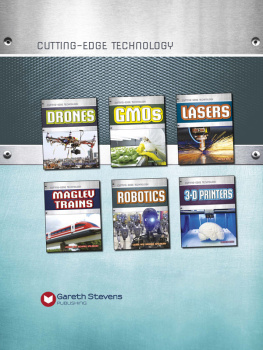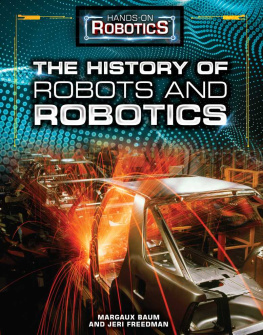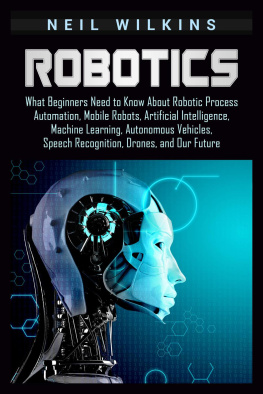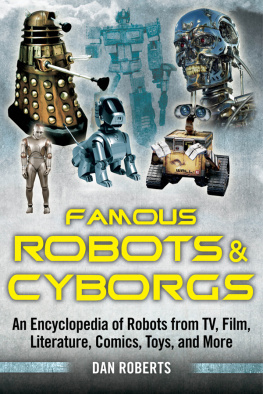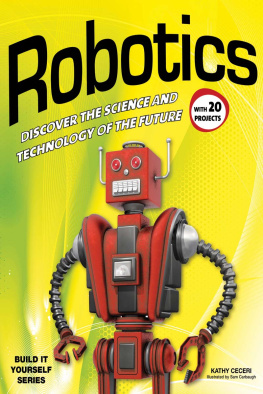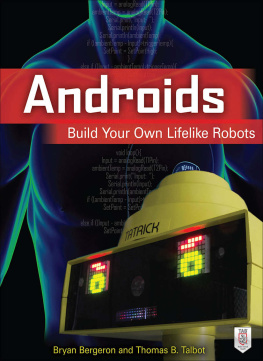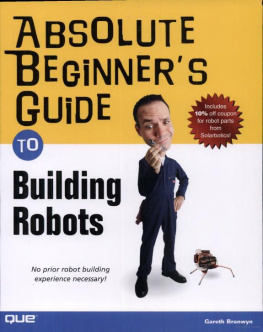
Copyright 2014 by McGraw-Hill Education. All rights reserved. Except as permitted under the United States Copyright Act of 1976, no part of this publication may be reproduced or distributed in any form or by any means, or stored in a data base or retrieval system, without the prior written permission of the publisher.
ISBN: 978-0-07-181405-8
MHID: 0-07-181405-1
The material in this eBook also appears in the print version of this title: ISBN: 978-0-07-181404-1, MHID: 0-07-181404-3.
E-book conversion by codeMantra
Version 1.0
All trademarks are trademarks of their respective owners. Rather than put a trademark symbol after every occurrence of a trademarked name, we use names in an editorial fashion only, and to the benefit of the trademark owner, with no intention of infringement of the trademark. Where such designations appear in this book, they have been printed with initial caps.
McGraw-Hill Education books are available at special quantity discounts to use as premiums and sales promotions or for use in corporate training programs. To contact a representative, please visit the Contact Us page at www.mhprofessional.com.
McGraw-Hill Education, the McGraw-Hill Education logo, TAB, and related trade dress are trademarks or registered trademarks of McGraw-Hill Education and/or its affiliates in the United States and other countries and may not be used without written permission. All other trademarks are the property of their respective owners. McGraw-Hill Education is not associated with any product or vendor mentioned in this book.
Information contained in this work has been obtained by McGraw-Hill Education from sources believed to be reliable. However, neither McGraw-Hill Education nor its authors guarantee the accuracy or completeness of any information published herein, and neither McGraw-Hill Education nor its authors shall be responsible for any errors, omissions, or damages arising out of use of this information. This work is published with the understanding that McGraw-Hill Education and its authors are supplying information but are not attempting to render engineering or other professional services. If such services are required, the assistance of an appropriate professional should be sought.
TERMS OF USE
This is a copyrighted work and McGraw-Hill Education and its licensors reserve all rights in and to the work. Use of this work is subject to these terms. Except as permitted under the Copyright Act of 1976 and the right to store and retrieve one copy of the work, you may not decompile, disassemble, reverse engineer, reproduce, modify, create derivative works based upon, transmit, distribute, disseminate, sell, publish or sublicense the work or any part of it without McGraw-Hill Educations prior consent. You may use the work for your own noncommercial and personal use; any other use of the work is strictly prohibited. Your right to use the work may be terminated if you fail to comply with these terms.
THE WORK IS PROVIDED AS IS. McGRAW-HILL EDUCATION AND ITS LICENSORS MAKE NO GUARANTEES OR WARRANTIES AS TO THE ACCURACY, ADEQUACY OR COMPLETENESS OF OR RESULTS TO BE OBTAINED FROM USING THE WORK, INCLUDING ANY INFORMATION THAT CAN BE ACCESSED THROUGH THE WORK VIA HYPERLINK OR OTHERWISE, AND EXPRESSLY DISCLAIM ANY WARRANTY, EXPRESS OR IMPLIED, INCLUDING BUT NOT LIMITED TO IMPLIED WARRANTIES OF MERCHANTABILITY OR FITNESS FOR A PARTICULAR PURPOSE. McGraw-Hill Education and its licensors do not warrant or guarantee that the functions contained in the work will meet your requirements or that its operation will be uninterrupted or error free. Neither McGraw-Hill Education nor its licensors shall be liable to you or anyone else for any inaccuracy, error or omission, regardless of cause, in the work or for any damages resulting therefrom. McGraw-Hill Education has no responsibility for the content of any information accessed through the work. Under no circumstances shall McGraw-Hill Education and/or its licensors be liable for any indirect, incidental, special, punitive, consequential or similar damages that result from the use of or inability to use the work, even if any of them has been advised of the possibility of such damages. This limitation of liability shall apply to any claim or cause whatsoever whether such claim or cause arises in contract, tort or otherwise.
This book is dedicated to all the children who take things apart and all those who grew up to invent and create.
Special thanks to Dianne Talbot and all parents who tolerated their childrens inventive behaviors.
Special thanks, too, to Adam Wyatt for his android photography.
About the Authors
Bryan Bergeron, MD is author of two dozen books and 500+ magazine articles, holds several patents in the areas of human simulation and embedded systems, and is Editor-in-Chief of SERVO Magazine and Nuts & Volts Magazine. He has designed and built human simulators for academia, the military, and commercial markets. His previous book for McGraw-Hill was Teardowns: Learn How Electronics Work by Taking Them Apart (2010).
Thomas B. Talbot, MD is the creator of several systems for training medics and healthcare professionals, and founded the medical simulation research and development program at the U.S. Defense Department. The author of numerous articles and book chapters, he is currently creating logical and emotionally expressive artificial intelligencedriven virtual humans for medical education.
Contents
Introduction
Androids: Build Your Own Lifelike Robots takes a unique, fun approach to learning about embedded systems, robotics, and electronics by using the human body as the focus of discussion. Sure, robotic crawlers and carpet roamers are cool platforms for experimentation, but most are cold, lifeless creations that are hard for people to relate to. Humans, in contrast, have complex reflexes, from hearts that beat at different rates based on stress to pupils that adjust to ambient light levels. If you want to take the first step in making your robots closer to humans, then this book is for you.
The inspiration for this book stems in part from the vision of great science fiction writers and in part from our experience developing human cybernetic systems for saving real human lives. If youve seen Blade Runner, Battlestar Galactica, Alien, Terminator, Prometheus, or Doctor Who, then you know that the pinnacle of robotics isnt simply a thinking tin can, regardless of intelligence. The androids featured in these and other sci-fi classics not only pass the Turing test, but they are also physiologically correctthey breathe, bleed, and sweat as we do. As a result, short of surgical exploration, these machines are indistinguishable from humans.
The second, more immediate and practical inspiration from this book reflects the need for lifelike human surrogates to train healthcare professionals on how to save lives and treat real patients. Our experience with available surrogates has taught us that were simply not there yet. Most of these systems are little more than storefront mannequins with a few sensors. Whats needed is a cohort of eager, enthusiastic engineers, experimentalists, and inventors to create the next generation of human surrogates. We hope that this book represents the first step in that journey for you. Even if your ultimate goal is to create an android companion worthy of Blade Runner, in the meantime, youll need a challenging day job to pay the bills. Designing human cybernetic systems that can help to save lives is a great place to start.
Next page

